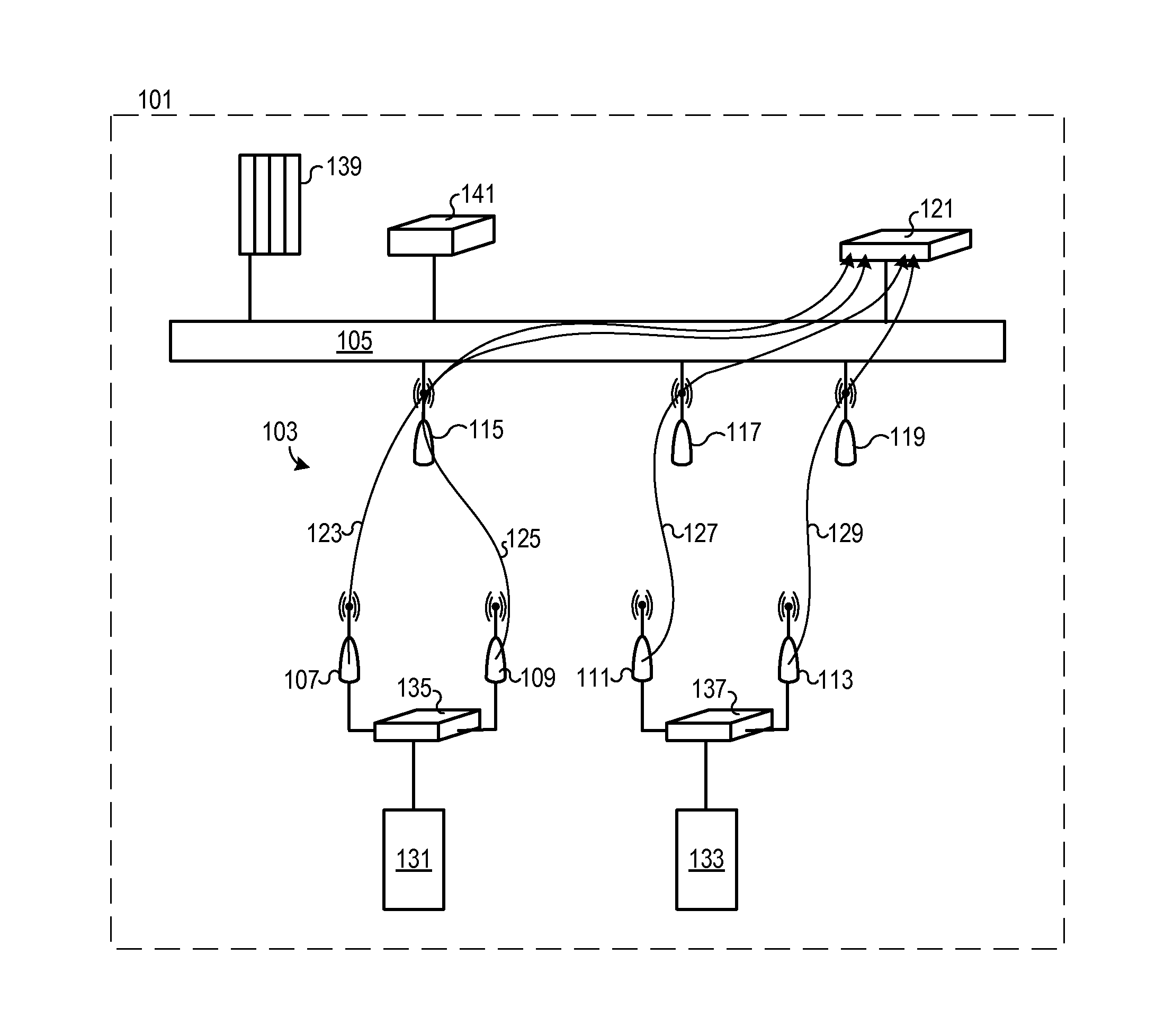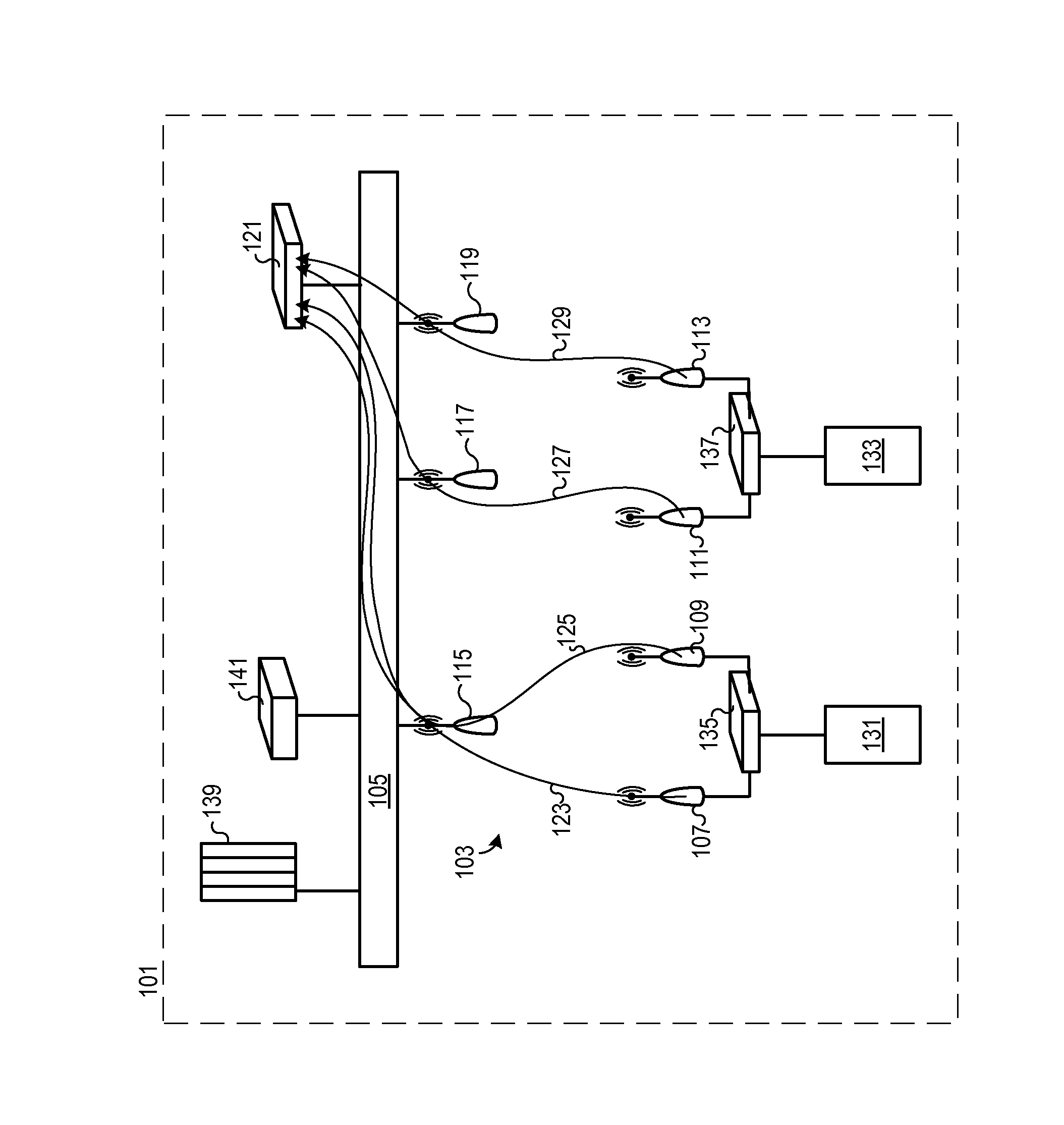Method for controlling a network system, network system, and computer program
a network system and computer program technology, applied in the direction of digital computers, connection management, instruments, etc., can solve the problems that the network system of the office wlan system does not support the network having clients at all, and achieve the effect of optimizing the cycle time, facilitating application-based coordination, and efficiently using information
- Summary
- Abstract
- Description
- Claims
- Application Information
AI Technical Summary
Benefits of technology
Problems solved by technology
Method used
Image
Examples
Embodiment Construction
[0035]FIG. 1 shows a network system 101 according to one exemplary embodiment of the invention. The network system 101 includes a wireless network 103 which is connected to a backbone network 105. The wireless network 103 includes multiple clients 107, 109, 111, and 113. The clients 107, 109, 111, 113 are connected to the backbone network 105 via multiple access points 115, 117, and 119. A client control device 121 is also connected to the backbone network 105. Although it is not shown here, more than three access points may also be provided. In another embodiment of the invention which is not shown, fewer than three access points may also be provided.
[0036]A tunnel 123, 125, 127, and 129 is respectively established between clients 107, 109, 111, and 113 and the client control device 121. Data may be transmitted between the corresponding clients 107, 109, 111, 113 and the client control device 121 via tunnels 123, 125, 127, and 129. The tunnels 123, 125, 127, and 129 may also be ref...
PUM
 Login to View More
Login to View More Abstract
Description
Claims
Application Information
 Login to View More
Login to View More - R&D
- Intellectual Property
- Life Sciences
- Materials
- Tech Scout
- Unparalleled Data Quality
- Higher Quality Content
- 60% Fewer Hallucinations
Browse by: Latest US Patents, China's latest patents, Technical Efficacy Thesaurus, Application Domain, Technology Topic, Popular Technical Reports.
© 2025 PatSnap. All rights reserved.Legal|Privacy policy|Modern Slavery Act Transparency Statement|Sitemap|About US| Contact US: help@patsnap.com


